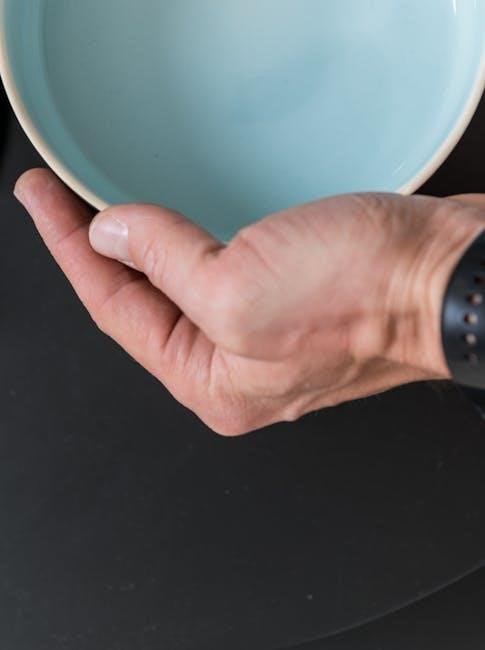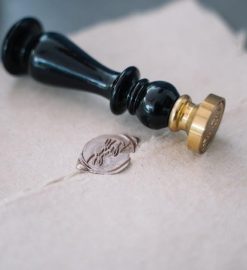merlin home transmitter user manual

The Merlin Home Transmitter is a remote monitoring system component designed to work with implanted cardiac devices, enabling secure data transmission to healthcare providers.
1.1 Overview of the Merlin Home Transmitter
The Merlin Home Transmitter is a medical device designed to remotely monitor patients with implanted cardiac devices. It collects data from the device and transmits it securely to healthcare providers. The transmitter supports both scheduled and unscheduled checks, ensuring continuous monitoring of cardiac activity. It is compatible with various connection methods, including direct analog landlines, cellular adapters, and wireless broadband kits, offering flexibility for different setups. The system is user-friendly, allowing patients to manage their health remotely while maintaining communication with their medical team. This device plays a crucial role in early detection of potential heart-related issues, enhancing patient safety and care outcomes.
1.2 Role of the Merlin Home Transmitter in Remote Monitoring
The Merlin Home Transmitter serves as a vital link between patients and healthcare providers in remote monitoring systems. It continuously collects data from implanted cardiac devices, such as pacemakers and defibrillators, and transmits this information to secure websites for analysis. This enables doctors to monitor heart activity, detect irregularities, and respond promptly to potential health issues. The transmitter supports both scheduled checks, as programmed by physicians, and unscheduled checks triggered by specific events, ensuring comprehensive monitoring. By facilitating real-time data transmission, it enhances patient care, reduces the need for in-person visits, and improves overall health outcomes through early intervention and management; This role is essential for patients requiring ongoing cardiac supervision.

Key Features of the Merlin Home Transmitter
The Merlin Home Transmitter offers compatibility with implanted cardiac devices, supports scheduled and unscheduled checks, transmits data securely, and connects via landline, cellular, or wireless methods, enhancing remote monitoring efficiency.
2.1 Compatibility with Implanted Cardiac Devices
The Merlin Home Transmitter seamlessly integrates with a variety of implanted cardiac devices, ensuring accurate data collection and transmission. This compatibility allows for consistent monitoring of critical heart functions, providing healthcare providers with essential insights. The transmitter supports devices such as pacemakers and implantable cardioverter-defibrillators, making it a versatile solution for remote patient care. Its design ensures that it can work with multiple device manufacturers, offering flexibility for patients with different implanted cardiac devices. This broad compatibility enhances the effectiveness of remote monitoring, enabling timely interventions and improving patient outcomes. The transmitter’s ability to connect with various devices makes it a reliable tool in modern cardiac care.
2.2 Scheduled and Unscheduled Device Checks
The Merlin Home Transmitter performs both scheduled and unscheduled device checks to monitor your implanted cardiac device. Scheduled checks occur at intervals set by your doctor, ensuring regular monitoring of your heart activity. Unscheduled checks are triggered if the transmitter detects an important heart event, such as irregular rhythms or other critical conditions. These checks allow for prompt data transmission to your healthcare provider, enabling timely interventions. The transmitter’s ability to initiate both types of checks ensures comprehensive monitoring, providing peace of mind for patients and their healthcare teams. This feature-rich system is designed to adapt to individual patient needs, enhancing remote cardiac care effectively.
2.3 Data Transmission to Secure Websites
The Merlin Home Transmitter securely transmits data from your implanted cardiac device to designated websites accessible by your healthcare provider. This ensures your medical information remains confidential and protected. The transmitter uses encrypted communication protocols to safeguard data during transmission, complying with strict medical security standards. Once data is sent, it is stored on secure servers, allowing your doctor to review it remotely. This seamless and secure process ensures timely medical interventions and maintains patient privacy. The reliability of these transmissions is crucial for effective remote monitoring, making the Merlin Home Transmitter a trusted tool in modern cardiac care management.
2.4 Compatibility with Various Connection Methods
The Merlin Home Transmitter offers flexibility by supporting multiple connection methods, ensuring reliable data transmission in different environments. It is primarily designed for use with a direct analog landline, but it may also work with VOIP and cable services. Additionally, the transmitter can be paired with a cellular adapter or a wireless broadband kit, providing options for patients without access to a traditional phone line. This versatility ensures that users can maintain continuous monitoring regardless of their connectivity setup. The system automatically adapts to the chosen connection method, ensuring seamless communication between the transmitter and the secure website. This adaptability enhances the overall usability of the Merlin Home Transmitter.

Setting Up the Merlin Home Transmitter
Place the Merlin Home Transmitter on a table or nightstand near your bed, following specific connection guidelines for analog landlines, cellular adapters, or wireless broadband kits.
3.1 Placement and Positioning Guidelines
The Merlin Home Transmitter should be placed on a stable surface, such as a nightstand or table, within 10 feet of your bed for optimal performance. Ensure the transmitter is positioned in an area with good ventilation to prevent overheating. Avoid placing it near metal objects or electronic devices that could cause interference. The transmitter should be at least 6 feet away from your implanted cardiac device to maintain accurate data transmission. Keep the device upright and secure to prevent tipping or movement. Ensure all cables are properly connected and avoid obstructing the transmitter’s antenna for reliable operation. Follow these guidelines to ensure proper functionality and data accuracy.
3.2 Connecting to a Direct Analog Landline
To connect the Merlin Home Transmitter to a direct analog landline, first locate a working phone jack. Plug the transmitter’s phone cord into the wall jack, ensuring a secure connection. Avoid using VOIP or digital lines, as they may cause compatibility issues. If no phone is connected, remove the phone connector from the transmitter’s port. Once plugged in, the transmitter will automatically detect the landline. If the connection is successful, the indicator light will turn green. Ensure the line is active and free from static for uninterrupted data transmission. Follow the setup guide for additional troubleshooting steps if the connection fails.
3.3 Using the Transmitter with a Cellular Adapter
The Merlin Home Transmitter models EX1150 and EX1150W can be used with a cellular adapter for wireless connectivity. Plug the adapter into the transmitter’s designated port. Ensure the adapter is fully charged and powered on. Follow the setup guide provided with the adapter for proper configuration. Once connected, the transmitter will automatically detect the cellular signal. If issues arise, consult the Start Up Guide for troubleshooting steps. This method is ideal for users without a landline, ensuring uninterrupted remote monitoring of your cardiac device. Always verify the adapter’s compatibility with your transmitter model before use.
3.4 Setting Up with a Wireless Broadband Kit
To set up the Merlin Home Transmitter using a wireless broadband kit, place the transmitter near your bed and connect it to the kit. Ensure your broadband network is active and follow the kit’s instructions to establish a secure Wi-Fi connection. Insert the provided Ethernet cable into the transmitter’s port and the other end into the broadband kit. Power on both devices and wait for the transmitter to synchronize with the network. If prompted, enter your network password. Once connected, test the setup by initiating a manual device check. For detailed steps, refer to the documentation provided with the wireless broadband kit.

Pairing the Transmitter with Your Cardiac Device
Place the transmitter near your bed, press and hold the Start button until it beeps, then stand close to ensure proper pairing with your cardiac device.
4.1 Steps to Pair the Transmitter
Place the Merlin Home Transmitter on a table or nightstand within 10 feet of your bed. Ensure it is positioned upright and stable.
Press and hold the Start button until you hear a beep, indicating the pairing process has begun.
Stand close to the transmitter to ensure proper communication with your implanted cardiac device.
Follow the specific instructions provided in the setup guide for your connection method (e.g., landline, cellular adapter, or wireless broadband kit).
Once paired, the transmitter will automatically collect and send data from your device to a secure website for your doctor to review.
Verify the pairing by checking for confirmation lights or sounds on the transmitter, as outlined in the user manual.
4.2 Verifying the Pairing Process
After initiating pairing, verify the process by observing the transmitter’s indicator lights and sounds. A steady green light typically indicates successful pairing, while a beep confirms the connection. Ensure the transmitter is placed within 10 feet of your bed and facing you during verification. Refer to the user manual for specific light patterns and sounds associated with successful pairing. If the pairing fails, restart the process or consult the troubleshooting section. Once paired, the transmitter will automatically begin monitoring and transmitting data from your implanted cardiac device to your healthcare provider. Always follow the manual’s guidelines for confirmation and troubleshooting steps.

Using the Merlin Home Transmitter
The Merlin Home Transmitter automatically collects and transmits data from your implanted cardiac device to secure websites. It performs scheduled and unscheduled checks, allowing manual initiation if permitted by your doctor. The transmitter uses indicator lights to signal status and alerts. Always refer to the user manual for detailed instructions on operation and troubleshooting.
5.1 Initiating a Manual Device Check
Initiating a manual device check with the Merlin Home Transmitter is a straightforward process. Press and hold the Start button for one second until a beep sounds, confirming the check has begun. Ensure you are within range of the transmitter for accurate data collection. The transmitter will then gather information from your implanted cardiac device and transmit it to a secure website for your doctor’s review. This feature is particularly useful for unscheduled checks when your doctor allows it. Always ensure the transmitter is properly set up and connected before initiating a manual check. Refer to the user manual for detailed instructions.
5.2 Understanding the Transmitter’s Indicator Lights
The Merlin Home Transmitter uses indicator lights to communicate its status. A steady green light indicates the transmitter is powered on and functioning normally. Flashing green signifies it is actively transmitting data. A yellow light signals a warning, such as a low battery or connectivity issue. A red light indicates an error, such as a failed transmission or no device connection. Understanding these lights helps users quickly identify the transmitter’s status and troubleshoot issues. Refer to the user manual for a detailed explanation of each light pattern and its corresponding meaning to ensure proper operation and address any potential problems promptly.
5.3 Responding to Alerts and Notifications
The Merlin Home Transmitter notifies users of important events through alerts and notifications. When an alert occurs, check the transmitter’s display or consult the user manual for specific guidance. If the transmitter detects an issue with your cardiac device or connection, it will trigger an audible or visual alert. Contact your healthcare provider immediately if instructed by the alert. For less critical notifications, such as low battery or connectivity issues, follow the troubleshooting steps provided in the manual. Always document the alert details and any actions taken to ensure proper follow-up with your medical team.

Technical Specifications of the Merlin Home Transmitter
The Merlin Home Transmitter complies with medical standards IEC60601-1:2012 and UL60601-1:2003. It is Class II medical equipment with no user-serviceable parts inside.
6.1 Compliance with Medical Standards
The Merlin Home Transmitter complies with international medical standards, including IEC60601-1:2012 and UL60601-1:2003. It is classified as Class II medical equipment, ensuring high safety and reliability. The device meets rigorous regulatory requirements for performance and security, making it suitable for use in remote monitoring systems. Compliance with these standards guarantees the transmitter’s ability to operate safely and effectively in various environments. This adherence to medical standards also ensures that the transmitter aligns with global benchmarks for patient data security and accurate transmissions, making it a trusted tool for healthcare providers.
6.2 Power Supply and Battery Information
The Merlin Home Transmitter operates using an AC power supply and includes a rechargeable battery for backup during power outages. The battery is non-replaceable and charges automatically when the transmitter is plugged into a power source. It provides up to 24 hours of continuous operation in the event of a power failure. The transmitter features a low-battery indicator, ensuring users are notified when the battery needs charging. Proper handling and storage of the battery are essential to maintain its performance and longevity, as outlined in the user manual. This ensures reliable operation and uninterrupted monitoring of cardiac device data.

6.3 Environmental Conditions for Operation
The Merlin Home Transmitter is designed to operate in typical indoor environments. It requires a temperature range of 10°C to 40°C (50°F to 104°F) and a relative humidity of 20% to 90% non-condensing; The transmitter should be placed in a well-ventilated area, away from direct sunlight and moisture. Avoid exposing it to extreme temperatures, humidity, or physical stress. The device complies with IEC60601-1:2012 and UL60601-1:2003 standards, ensuring safe operation under normal household conditions. Proper environmental conditions are crucial for maintaining the transmitter’s performance and reliability in monitoring cardiac device data effectively.

Troubleshooting Common Issues
For connection or data issues, restart the transmitter or check cable connections. Contact technical support at 1-877-MY-MERLIN (1-877-696-3754) Monday-Friday, 8AM-8PM EST, for assistance.
7.1 Resolving Connection Problems
To resolve connection issues, ensure the Merlin Home Transmitter is properly connected to a direct analog landline, cellular adapter, or wireless broadband kit. Verify all cables are securely plugged in and not damaged. If using a cellular adapter, check signal strength and ensure it’s placed in an area with adequate coverage. For wireless connections, restart your router and transmitter. If issues persist, contact technical support at 1-877-MY-MERLIN (1-877-696-3754) for further assistance. Always refer to the user manual for detailed troubleshooting steps.
7.2 Addressing Data Transmission Failures
If the Merlin Home Transmitter fails to send data, first check the connection to the phone line, cellular adapter, or wireless broadband kit. Ensure the transmitter is powered on and all cables are securely connected. Verify that your internet service is active if using a wireless connection. Restart the transmitter by unplugging it, waiting 10 seconds, and plugging it back in. If issues persist, consult the user manual for additional troubleshooting steps or contact technical support for assistance. Regularly updating your connection methods can help prevent future transmission failures.
7.3 Resetting the Transmitter
To reset the Merlin Home Transmitter, unplug it from the power source, wait 10 seconds, and plug it back in. This process will restart the device and may resolve connectivity or transmission issues. Ensure all cables are securely connected after restarting. If the transmitter does not power on, check the power supply or battery. After resetting, the transmitter will automatically attempt to reconnect to your implanted device and resume monitoring. If issues persist, refer to the user manual for further guidance or contact technical support for assistance;

Safety Precautions and Maintenance
Avoid exposing the transmitter to water or extreme temperatures. Clean with a soft cloth and mild detergent. Store in a dry, secure location when not in use.
8.1 Handling the Transmitter Safely
To ensure safe operation, avoid exposing the Merlin Home Transmitter to water, extreme temperatures, or direct sunlight. Handle the device gently to prevent physical damage. Keep it out of reach of children and pets. Avoid stacking objects on the transmitter, as this may interfere with its functionality. When cleaning, use a soft, dry cloth or a mildly dampened cloth without harsh chemicals. Do not submerge any part of the transmitter in water. Store the device in a secure, dry location when not in use. Always follow the manufacturer’s guidelines for handling and maintenance to preserve its performance and longevity.
8.2 Cleaning and Storing the Transmitter
Regular cleaning and proper storage are essential for maintaining the Merlin Home Transmitter’s functionality. Use a soft, dry cloth to wipe the device, avoiding harsh chemicals or liquids. For stubborn marks, a lightly dampened cloth with mild soap may be used, but ensure no moisture enters the device. Store the transmitter in a cool, dry place away from direct sunlight. Avoid storing it in humid environments or extreme temperatures. When not in use for extended periods, keep the transmitter in its original packaging or a protective case to prevent damage. Always ensure the device is dry before storing to prevent moisture-related issues.
8.3 Avoiding Damage to the Transmitter
To prevent damage to the Merlin Home Transmitter, avoid exposing it to extreme temperatures, moisture, or physical stress. Never submerge the device in water or use abrasive cleaners, as this can harm the exterior and internal components. Keep the transmitter away from direct sunlight and avoid dropping it, as this may cause internal damage. Additionally, ensure the device is placed on a stable surface to prevent accidental knocks. Avoid using incompatible accessories that might cause electrical issues. If the transmitter is not in use, store it in a protective case to safeguard against dust and scratches, ensuring its longevity and optimal performance.

Consulting the User Manual
The user manual provides detailed instructions for setting up, pairing, and troubleshooting the Merlin Home Transmitter, ensuring proper usage and optimal performance of the device.
9.1 Accessing the Full User Manual
The full user manual for the Merlin Home Transmitter can be accessed online through Abbott’s official website or downloaded as a PDF. Users can find direct links to the manual on the product support page. The manual is compatible with various devices, including smartphones, tablets, and computers, ensuring easy access. It is recommended to download the latest version to ensure all updates and corrections are included. The manual is also available in multiple languages for global users. For assistance, contact Abbott’s technical support team, who can guide you through the process of accessing and understanding the manual.
9.2 Navigating the Manual for Specific Information
The Merlin Home Transmitter user manual is organized to help users quickly find specific information. The manual includes a detailed table of contents and an index for easy navigation. Users can locate sections by keyword or topic, such as setup instructions, troubleshooting, or technical specifications. The manual also features clear headings and subheadings to guide readers through complex procedures. For digital versions, built-in search functionality allows users to type in keywords and find relevant pages instantly. This structure ensures that users can efficiently access the information they need without reviewing the entire document. The manual is designed to be user-friendly, catering to both technical and non-technical audiences.
The Merlin Home Transmitter is a vital tool for remote cardiac monitoring, offering ease of use and reliable data transmission. Always follow the user manual for optimal functionality and safety.
10.1 Summary of Key Points
The Merlin Home Transmitter is a remote monitoring device for implanted cardiac devices, ensuring data is securely sent to healthcare providers. It supports multiple connection methods, including landlines, cellular adapters, and wireless broadband kits. The transmitter performs scheduled and unscheduled device checks, with indicator lights providing status updates. Proper setup, pairing, and maintenance are essential for optimal functionality. Users must follow safety guidelines and consult the user manual for troubleshooting and operational instructions. Regular updates and adherence to medical standards ensure reliability and patient safety, making it a critical tool for continuous cardiac monitoring.
10.2 Importance of Following the User Manual
Adhering to the Merlin Home Transmitter user manual is crucial for ensuring safe and effective use. The manual provides clear guidelines for setup, operation, and troubleshooting, minimizing risks of device malfunctions. Proper pairing and configuration, as outlined, ensure accurate data transmission to healthcare providers. Ignoring manual instructions may lead to connectivity issues or data errors, compromising patient safety. Regular updates and maintenance, as specified, are essential for optimal performance. Following the manual also ensures compliance with medical standards and regulations, guaranteeing reliable monitoring and timely alerts for critical heart events. Always refer to the manual for specific instructions tailored to your transmitter model.



Leave a Reply
You must be logged in to post a comment.